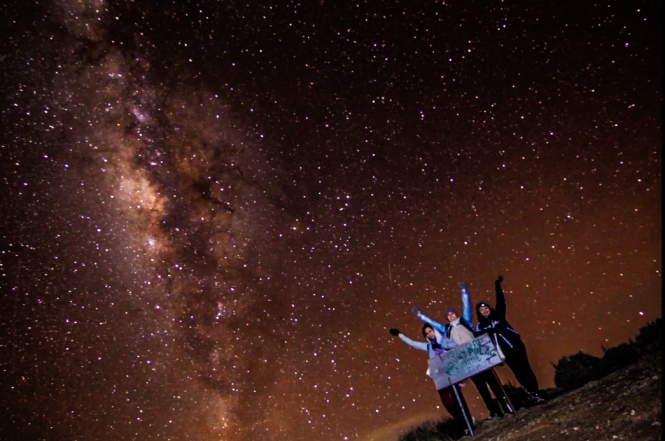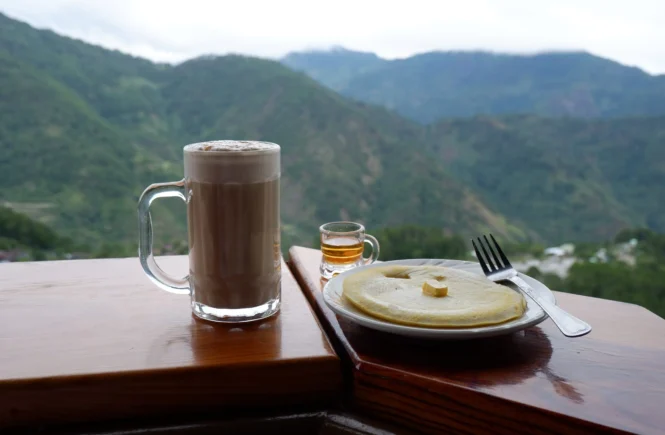In major cities such as Metro Manila and Metro Cebu, the dark skies peppered with glittering stars are often overlooked–or practically nonexistent. In fact, night skies and stars are hardly appreciated in the city. After all, metropolitan cities are often bright with lights themselves– insomuch that stars in the sky look like nothing more than mere specks of dust to city dwellers.
Indeed, in cities beleaguered with light pollution, Mother Nature’s work often takes the backseat while the artificial lights around the city dance around. As a result, stargazing is practically impossible to do. Considering that stargazing in cities besieged by light pollution already poses a challenge by itself, it becomes almost impossible to capture any decent image of the night sky and the stars with a camera. In this regard, executing astrophotography shots in the city is not exactly a feasible idea. Luckily, events such as the annual Earth Hour where people are encouraged to unplug for an hour (and when the surroundings are dark enough to expose the stars we often overlook) allow us a moment’s reprieve from the light pollution. However, even then, it can be quite difficult for astrophotographers to take worthy shots of the night sky. With this in mind, they would be constrained to look for places all over the Philippines with minimal to no light pollution at all. Read on below to see the top places for astrophotography in the Philippines.
VISUAL ASTRONOMY VS PHOTOGRAPHIC ASTRONOMY
In a nutshell, the main difference between visual astronomy and photographic astronomy is that the former is basically just gazing at the stars whereas the latter involves the capturing of still or moving images of objects in the night sky.
Long ago, all of astronomy was based solely on visual observations only making it a bit challenging to chart planetary movements, constellations and star locations. In fact, history is fraught with notes and sketches from the patient and determined work of dedicated astronomers such as Kepler, Galileo and the Herschel’s. It was not until 1840 where the first successful astrophoto was released. It was an image of the moon captured by Louis Jacques Mande Daguerre. However, while it took him twenty minutes to expose, it was not much to look at.
As time progressed, technological innovations were made to increase the capturing power of the camera. In this regard, individuals with an affinity for the night sky have beefed up their gears. As a result, astrophotography has become a leisurely activity or hobby but more importantly, it revolutionized the scientific understanding of the universe the moment it was introduced. If not for it, the sky would not have been mapped out completely.
THE TOP ASTROPHOTOGRAPHY SPOTS IN THE PHILIPPINES
WK Forest Reserve and Campgrounds (Tanay, Rizal)
Nestled deep in the mountains of Tanay is WK Forest Reserve and Campgrounds, one of Rizal’s best-kept secrets. It is one of the latest campsites in Tanay, Rizal and is a favorite among 4X4 enthusiasts. The camp is very secluded (seeing as it can only be traversed by a 4X4 vehicle, hiking or a motorbike) ensuring that you get a magnificent view of the night sky. WK Forest Reserve and Campgrounds has three types of campsites (Open, Forest and Overlooking Camp) with the Open Camp being the most feasible for stargazing and astrophotography.
Mt. Gulugod Baboy (Mabini, Batangas)
Climbing Mt. Gulugod Baboy is pretty much like a journey underneath a blanket of stars. Apart from the intriguing name, Mt. Gulugod Baboy is said to offer an expansive view of the sea from its mountaintop. In fact, apart from being a popular place for stargazing and astrophotography, Mt. Gulugod Baboy is an ideal campsite for individuals who just wish to enjoy scenic views.
Laiya, Batangas
While largely a beach hotspot, Batangas is one of the best places in Luzon for stargazing. In lieu of a beach getaway such as in Calatagan and Tali, head to Laiya. It is one of the few places in Batangas that remains mostly untouched and allows the beach-goers a semblance of peace in a starlit place. As the place has no active nightlife, it is an excellent place for stargazing and astrophotography.
Cagbalete Island
Cagbalete Island mostly consists of beach spots considering that it has a shoreline with powdery white sand. However as the vibe of the island is laidback and as there are a lot of secluded spots, it is one of the ideal spots in the Philippines for stargazing and astrophotography.
Cloud 9 Boardwalk (Siargao)
Siargao is mainly a place for beach lovers and surfers who love the tropical lifestyle. Cloud 9 Boardwalk, one of its hotspots, attracts both beach enthusiasts and surfers. However, the place is quite magical at night as the night sky becomes clearer and the stars more evident. As this part of Siargao only has a handful of lights peppered around the place, it is the perfect spot for both stargazing and astrophotography.
Zambales
Zambales is rife with places ideal for astrophotography and stargazing. Even its well-known coves and hotspots such as the Nagsasa Cove are places feasible for capturing images of the night sky. What makes Nagsasa Cove so magical is that you can lie down by the shores and just delight in the heavenly bodies above as you drift to sleep. Alternatively, if you do not wish to suffer-through a boat ride, then consider Pundaquit in Zambales as an alternative. The place offers a few homestays in their coastal community and by dusk, you can revel in the wonder of the night sky filled with a billion stars.
Tinalisayan Island (Masbate)
One of the lesser-known beach hotspots in the Philippines is Tinalisayan Island in Masbate. Owing to its anonymity, few travelers ever go here and it has remained virtually untouched. As a result, it is one of the most beautiful places in the country. With the stunning and velvety ivory sandbar, the view is incredibly breathtaking by the time the sun settles and the moon takes over. Just imagine how it would look with the milky-way galaxy in the vast skies.
Mount Pulag (Benguet)
Mount Pulag is one of the most famous campsites in the Philippines—and for good reason. With the cool weather and awe-inspiring views, who could resist a visit to the place? It is truly one of the most beautiful destinations in the country and is worth a spot on your bucket list. As the country’s third-highest peak, Mount Pulag offers a view unlike any other. It has one of the most stunning scenes of the night sky making it a premier spot for astrophotography and stargazing—certainly a rewarding feat after a grueling climb!
Calaguas Island (Camarines Norte)
Located in the province of Camarines Norte, Calaguas Island is an island that allows you to explore heaven on earth. Apart from the tranquil and serene vibe, a magnificent night sky awaits its visitors. In Calaguas, visitors can enjoy a myriad of activities from swimming to stargazing and astrophotography.
Batanes

Dubbed as the most cinematic place you will ever see in the Philippines, Batanes is a visual delight whether it is day or night. Apart from its remoteness, Batanes is ideal for stargazing and astrophotography owing to its proximity away from large cities as well as the scarcity of artificial lighting on the small island. Here, visitors are lucky enough to see the Milky Way sky—something that cannot be appreciated in cities.
The Philippines, albeit peppered with major cities fraught with light pollution, still has an abundance of places that offer travelers a glorious and scenic view of the night sky. So, if you have ever wondered how the night sky looks in its plain glory, pack your bags and take a trip to one of the places enumerated above. Oh, and to commit the trip to memory, bring your camera with you and snap a shot of the night sky that is never visible in the cities.
For your camping needs and essentials, shop at Philippine Camping Gears Online Shop.














